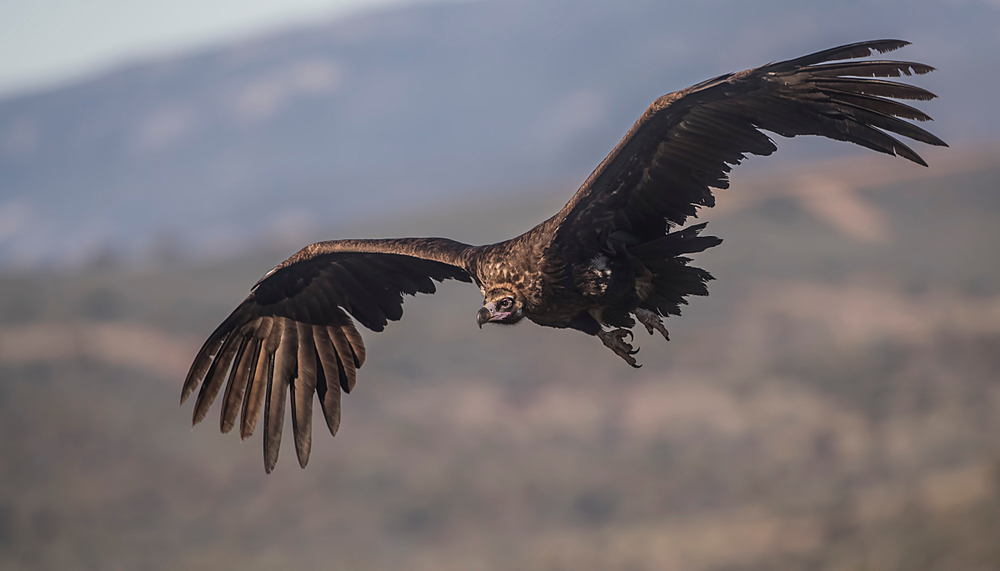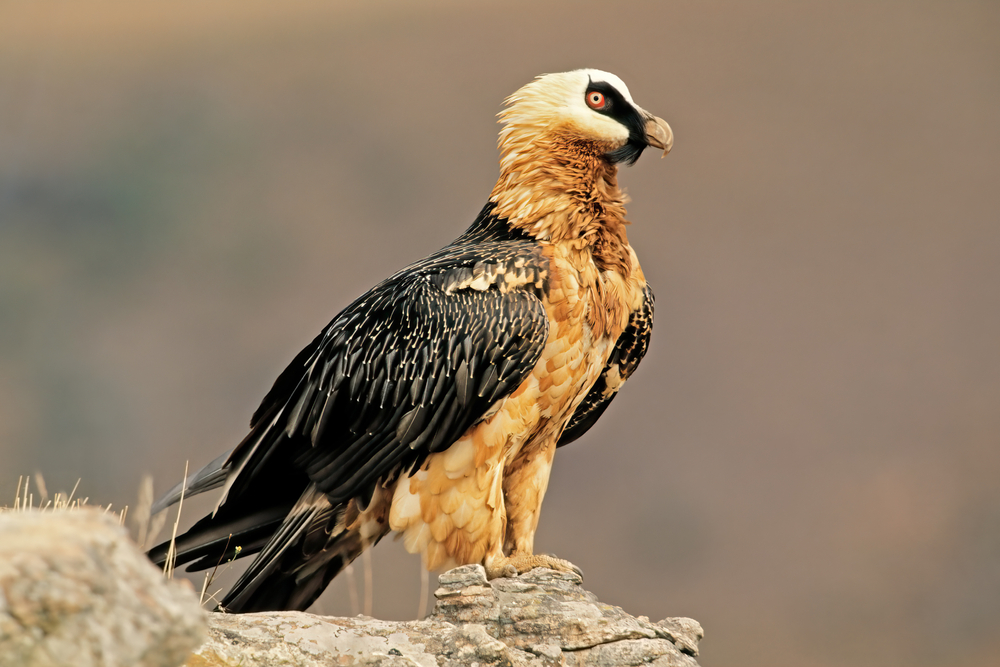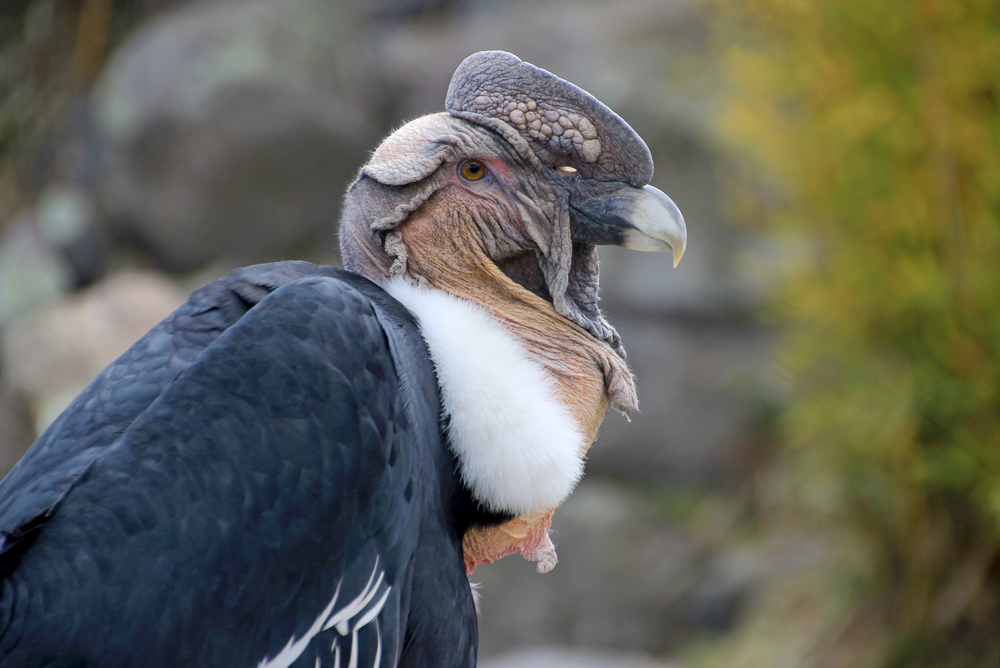The Black Vulture (Coragyps atratus) is most closely related to the Turkey Vulture (Cathartes aura), another New World vulture with overlapping range. While Turkey Vultures rely on their keen sense of smell, Black Vultures depend more on sight and social foraging.
About
The Black Vulture (Coragyps atratus), part of the Cathartidae family, is a widespread scavenger found across the southeastern United States, Central America, and much of South America. It is one of the most common New World vultures and plays a crucial ecological role in cleaning up carrion and preventing the spread of disease.
This medium-to-large vulture is easily recognized by its dark, blackish plumage, short squared-off tail, and bare gray-black head. With a wingspan of 1.3–1.7 meters (4.3–5.6 ft) and a body length of 56–74 cm (22–29 in), the Black Vulture is slightly smaller than the Turkey Vulture but more compact and stocky. In flight, it soars on broad wings with distinctive white patches near the wingtips, often flapping more frequently than other vultures.
As a scavenger, the Black Vulture feeds mainly on carrion but will also consume eggs, newborn livestock, or refuse when available. Unlike the Turkey Vulture, which relies heavily on its keen sense of smell to locate food, the Black Vulture primarily uses eyesight, often following other vultures to carcasses. Their aggressive nature sometimes allows them to dominate feeding sites.
Breeding occurs in sheltered areas such as caves, hollow trees, abandoned buildings, or thickets. The female typically lays 2–3 eggs directly on the ground without building a nest. Both parents share incubation and feed the chicks by regurgitation. The young fledge after about 2.5 to 3 months.
Culturally, the Black Vulture has long been both respected and misunderstood—viewed as a purifier of the environment yet also seen as a pest near human settlements. Despite occasional conflicts with farmers, populations are stable and even expanding in some regions due to adaptability and protection from legal safeguards.
Physical Characteristics
The Black Vulture (Coragyps atratus) is a stocky New World vulture found throughout the Americas, easily recognized by its dark plumage and short tail.
Plumage:
-
Adults: Uniform black feathers covering the body, wings, and tail, with a slight sheen in sunlight.
-
Underwings: Pale or silvery patches on the wingtips are visible in flight, helping distinguish them from Turkey Vultures.
-
Juveniles: Similar to adults but slightly browner with less sheen.
Head and Face:
The head and upper neck are bare, covered with wrinkled gray-black skin that prevents feather fouling while feeding on carrion. The beak is short, hooked, and ivory-colored at the tip.
Body and Wings:
The body is compact and broad, with relatively short but wide wings. Their wingbeats are faster and shallower than those of Turkey Vultures, giving them a distinctive flight style.
Tail:
The tail is short and squared, unlike the long, rounded tail of the Turkey Vulture. This feature contributes to their rapid, flapping flight.
Size:
-
Length: 22–29 in (56–74 cm)
-
Wingspan: 52–66 in (1.3–1.7 m)
-
Height at Rest: About 23 in (59 cm) when perched
Weight:
-
Adults: 3.5–6.6 lbs (1.6–3.0 kg)
The Black Vulture’s uniform black plumage, wrinkled bare head, short square tail, and rapid wingbeats make it one of the most recognizable scavengers in the Americas. Its stocky build and strong social behavior set it apart from other vultures..
Reproduction
The Black Vulture (Coragyps atratus) has a relatively simple but cooperative reproductive cycle, often nesting in secluded areas and raising chicks with strong parental involvement.
1. Mating and Courtship:
Black Vultures are monogamous and form long-term pair bonds. Courtship includes mutual preening, aerial displays, and ritual hopping on the ground. Mated pairs often remain together year-round.
2. Nesting Sites:
They do not build traditional nests. Instead, eggs are laid directly on the ground in sheltered sites such as caves, hollow trees, thickets, or abandoned buildings. Nesting sites are reused across years.
3. Egg Laying:
The female lays 1–3 eggs per clutch, most often 2, between February and June depending on the region. Eggs are cream-colored with dark blotches.
4. Incubation:
Incubation lasts about 32–41 days, with both parents sharing incubation duties equally.
5. Hatching and Care of Chicks:
Chicks hatch covered in white down and are completely dependent on their parents. Both parents regurgitate food to feed the young. Family groups often stay together at communal roosts.
6. Fledging and Independence:
Young fledge at about 2.5–3 months of age. Even after fledging, they may remain with their parents for several additional months, joining extended family groups that forage together.
7. Breeding Frequency:
Black Vultures raise one brood per year, though failed nests may be replaced with a second attempt.
The Black Vulture’s cooperative nesting behavior, extended parental care, and tendency to remain in family groups distinguish it from many other raptors and contribute to its reproductive success.
Lifespan
The Black Vulture (Coragyps atratus) is a long-lived scavenger, with survival influenced by predation, human activity, and food availability.
Lifespan in the Wild:
In their natural range, Black Vultures typically live 10–20 years. The oldest recorded wild individual lived over 25 years. High juvenile mortality occurs due to predation and starvation.
Lifespan in Captivity:
With regular food, safety from predators, and veterinary care, Black Vultures can live much longer, often reaching 30 years, with some individuals recorded at 40+ years.
Threats to the Black Vulture:
-
Predation: Eggs and chicks are vulnerable to raccoons, foxes, snakes, and other predators. Adults have few natural enemies.
-
Human Conflict: Sometimes persecuted due to their tendency to scavenge livestock carcasses or raid garbage.
-
Habitat Disturbance: Deforestation and urban development may reduce secluded nesting areas.
-
Poisoning & Pollution: Ingesting poisoned carcasses or lead fragments from hunting ammunition poses significant risks.
-
Collisions: Vehicle strikes and electrocution from power lines are notable sources of mortality.
Despite these threats, Black Vultures have adapted well to human-altered environments, often thriving near towns, landfills, and farms, which provide abundant food sources.
Eating Habits
The Black Vulture (Coragyps atratus) is a scavenger that thrives in both natural and human-altered environments, feeding opportunistically on a wide variety of food sources.
Diet:
-
Carrion: Their primary food source, including roadkill, livestock carcasses, and wild ungulates.
-
Garbage: Frequently forage at landfills and refuse sites, adapting well to human presence.
-
Small Vertebrates: Occasionally take live prey such as newborn livestock, small birds, reptiles, and turtles.
-
Eggs: Will raid bird nests for eggs and hatchlings.
Hunting Strategy:
-
Scavenging: Rely heavily on sight and social behavior to locate carrion, often watching Turkey Vultures and following them to food.
-
Group Foraging: Frequently feed in groups, using numbers to overwhelm competition and dominate carcass sites.
-
Opportunistic Predation: In some regions, they may kill weak or vulnerable live prey, though this is rare compared to scavenging.
Feeding Behavior:
-
Have strong, hooked beaks but less powerful than some vultures, so they often wait for Turkey Vultures to tear open tough hides before joining in.
-
Feed aggressively in groups, establishing hierarchies with dominant birds feeding first.
-
Can gorge themselves on large amounts of carrion, then go several days without eating.
Success and Adaptability:
Black Vultures are among the most adaptable scavengers, thriving in rural, forested, and urban environments alike. Their ability to exploit carrion, garbage, and occasional live prey has allowed them to expand their range significantly in the Americas.
Uniqueness
The Black Vulture (Coragyps atratus) is a highly adaptable scavenger with several features that set it apart from other vultures.
Bare, Wrinkled Head:
Its gray-black, wrinkled head is an adaptation for hygiene, preventing feathers from fouling while feeding deep inside carcasses.
Aggressive Social Feeders:
Unlike Turkey Vultures, which are more solitary, Black Vultures often forage in groups, using numbers to dominate carcasses and displace competitors.
Reliance on Turkey Vultures:
Black Vultures have a weaker sense of smell, so they often follow Turkey Vultures—who locate carcasses by scent—and then use strength in numbers to take over the food source.
Short, Squared Tail:
Their short, square tail and rapid, shallow wingbeats distinguish their flight style, making them appear stockier and more direct than other soaring vultures.
Urban Adaptability:
They thrive around human settlements, landfills, and highways, showing remarkable resilience and resourcefulness in exploiting human-provided food sources.
Cultural Symbolism:
In parts of Central and South America, the Black Vulture is seen as both a cleanser of the environment and a bird associated with death and rebirth, reflecting its scavenger role.
The Black Vulture’s social dominance, reliance on teamwork, and adaptability to both wild and urban environments make it one of the most distinctive and successful scavengers of the Americas.
Be the First to Share Photos of This Species.
FAQ’s
1. What is the species closest to the Black Vulture?
2. How does the Black Vulture compare to other vultures?
Black Vultures are stockier with shorter tails and have a more aggressive, group-based feeding style compared to the solitary-feeding Turkey Vulture. They lack the strong soaring grace of Andean Condors or Bearded Vultures but excel in adaptability, often thriving near human settlements.
3. Which national parks provide the best opportunities to see a Black Vulture?
Which national parks provide the best opportunities to see a Black Vulture?
-
Everglades National Park (Florida, USA): Common around wetlands and visitor areas.
-
Great Smoky Mountains National Park (USA): Frequently seen soaring and scavenging along roadsides.
-
Chapada dos Veadeiros National Park (Brazil): Abundant in open savanna and scrub.
-
Iguaçu National Park (Argentina/Brazil): Regularly observed near waterfalls and forest edges.





































































